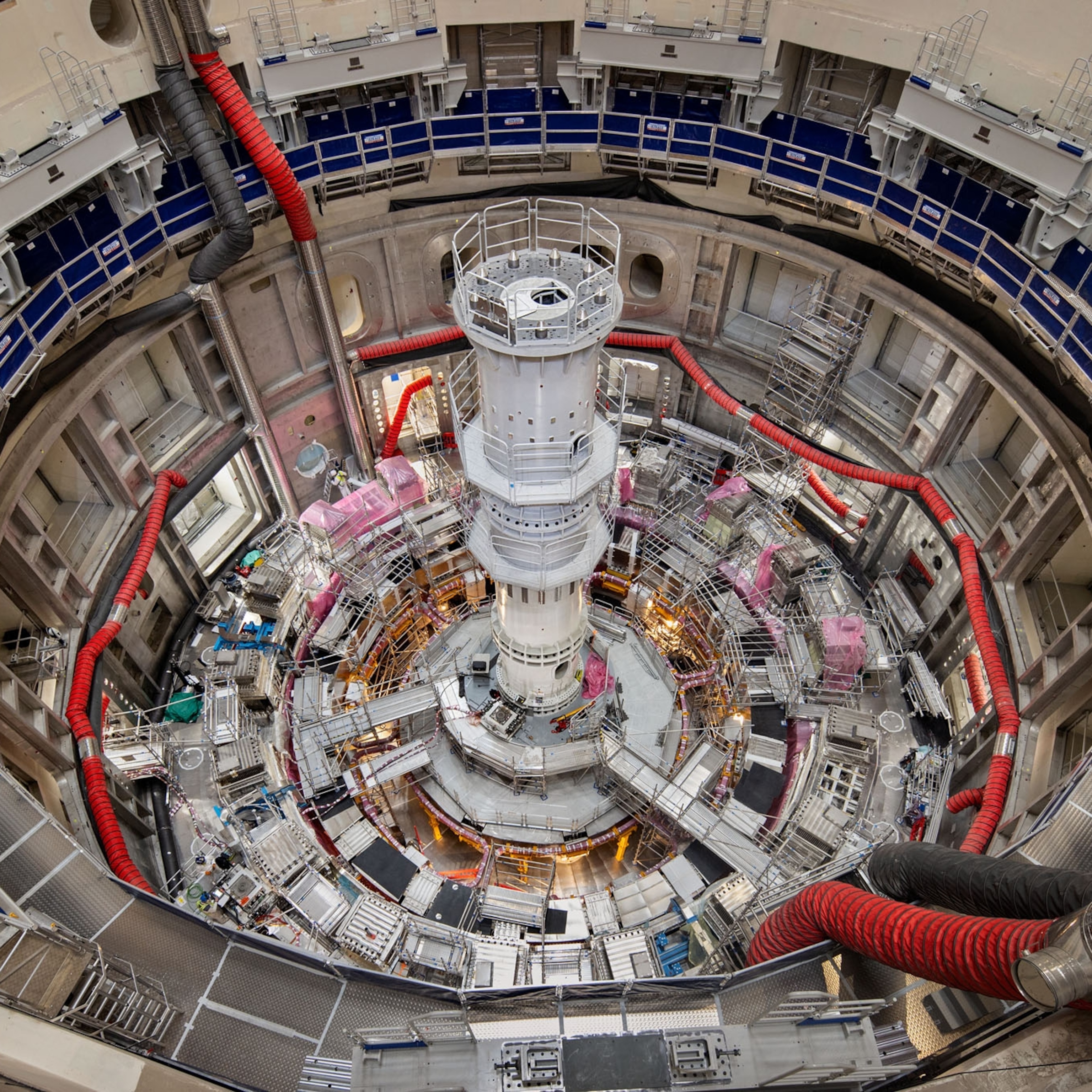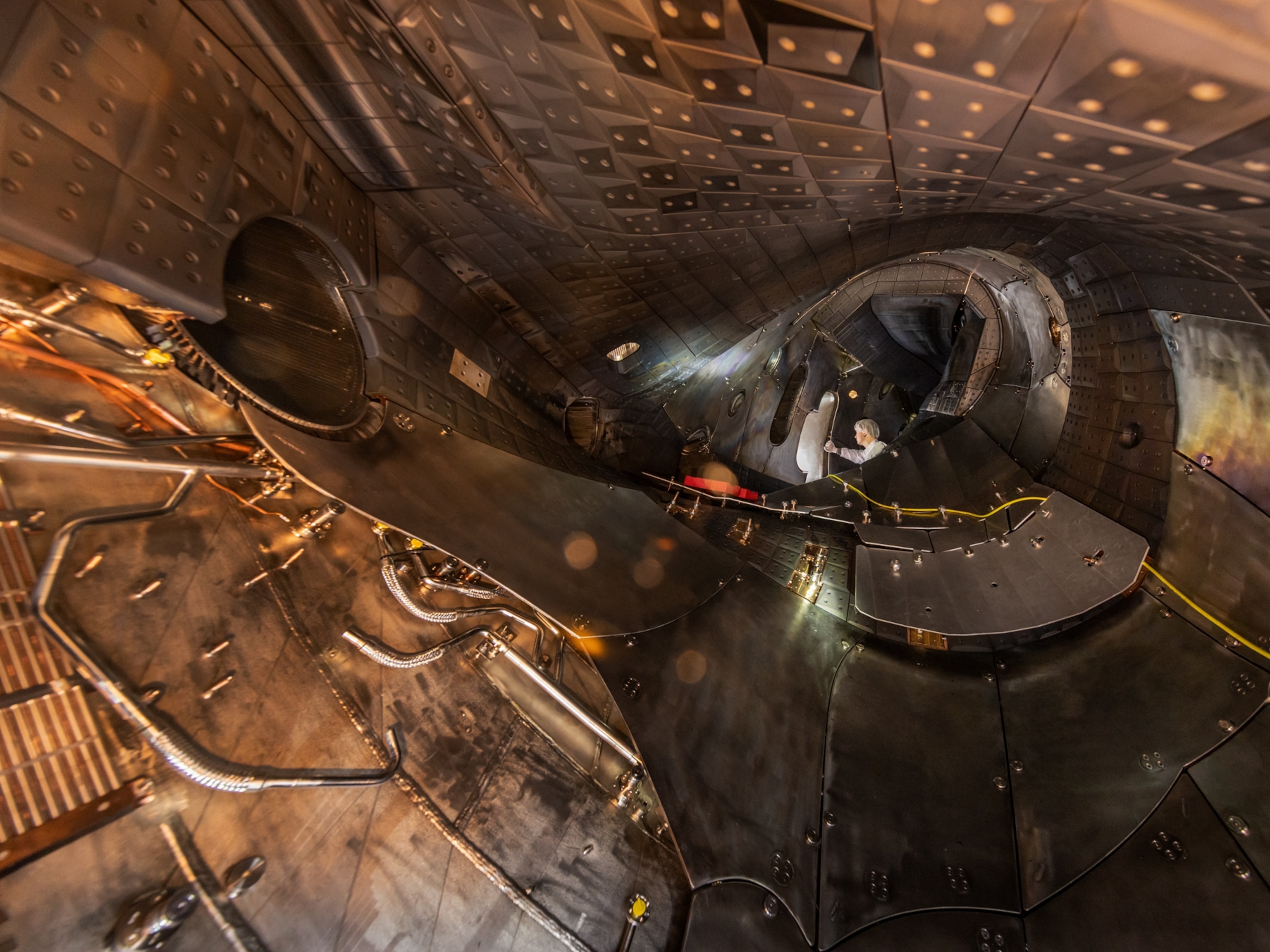
Can Nuclear Waste Spark an Energy Solution?
Can Nuclear Waste Spark an Energy Solution?
This story is part of a special series that explores energy issues. For more, visit The Great Energy Challenge.
A new generation of nuclear power technology seeks to transform one of the industry’s most enduring problems—its radioactive waste—into an energy solution.
The idea is to reprocess that spent fuel to generate more power. Proponents say the know-how is available now to address the nuclear proliferation concerns that have bedeviled previous recycling plans. And they say the advanced reactors that would run on that recycled fuel would mark a new level of progress on safety.
Nuclear critics remain skeptical, especially because the industry is calling on government to bear the large expense of building the first plants to demonstrate the technology. But given the urgency of climate change, and nuclear technology’s ability to generate large amounts of power without emitting greenhouse gases, the industry and its supporters are saying that the Integral Fast Reactor (IFR), which has been studied for decades, is worth a new look.
Reducing Waste and Radioactivity
Nearly all nuclear power reactors in service around the world are fueled with uranium; water is needed not only to cool the reactor but to slow the neutrons so fission will be effective. But dating back to the beginnings of nuclear power research, there have been efforts to deploy effective “fast” reactors, using a combination of plutonium and uranium
The neutrons were not cooled with water in these reactors; they remained “fast.” The original idea was to create a chain reaction that would produce more fuel than the reactor consumed—a so-called “breeder” reactor. But the aim of the latest efforts in Integral Fast Reactor technology is not to breed new fuel, but to fission the fuel as completely as possible—while producing a great deal of energy.
Such reactors wouldn’t be the cement behemoths that are the image of nuclear power today. They’re intended to be no bigger than 20 feet across and use a liquid metal such as sodium to control the nuclear reaction instead of high-pressure water.
In theory, IFRs would take the waste produced by conventional power plants and separate the usable uranium and other dangerous materials using a molten salt bath and electricity. Those recovered materials would then be used to fuel the advanced reactor. Of course, the IFR would produce spent fuel, just as old reactors do. But the volume of waste would be reduced and the radioactivity of this waste would be far less than the nuclear power waste being produced today. The experts make the comparison in terms of the long-range storage horizon: IFR waste would have to be stored for a few hundred years, compared to thousands of years now required for spent fuel. As a practical matter, this reduced radioactivity reduces the area needed to store the spent fuel. And if there’s a safety problem inside the reactor, the IFR incorporates “passive safety”—features that require no operator control—to prevent a meltdown. The reactor is designed to simply stop working in the event of a malfunction.
“It’s very clear when you get into details that this is the best energy system, bar none,” said Tom Blees, president of the Science Council for Global Initiatives, a nonprofit focused on resources and climate, and author of Prescription for the Planet, a 2008 book advocating the technology. “We have to make a choice—provide abundant energy for the planet or be content with these resource wars we have all the time.”
Tom Sanders, manager of the Global Nuclear Futures Program at New Mexico’s Sandia National Laboratories and a past president of the American Nuclear Society, told a United States Senate committee recently that such reactors “could have the advantage of promoting a cradle-to-grave approach to the nuclear fuel cycle such that you could provide reactors to developing nations and not have to worry about refueling them for 10 to 20 years.”
One of the companies aggressively seeking to make that case is GE Hitachi Nuclear Energy of Wilmington, North Carolina. Eric Loewen, the company’s chief consulting engineer for advanced plants, has been giving presentations around the United States about GE’s Power Reactor Innovative Small Module technology, or PRISM. Touting the technology everywhere from local chambers of commerce to Capitol Hill, Loewen has been dubbed by Esquire magazine as “the man who could end global warming.”
Loewen hopes that President Barack Obama’s Blue Ribbon Commission on America’s Nuclear Future will be receptive as well. The panel, co-chaired by former National Security Advisor Brent Scowcroft and former Democratic congressman Lee Hamilton of Indiana, who co-led the 9/11 Commission, is to deliver a draft report on the nation’s nuclear energy and nuclear waste options next year. One stumbling block may be that the Obama administration in early 2009 indicated it would not be pursuing fast reactors or recycling facilities in the near term, when it cancelled President George W. Bush’s effort at such an initiative, the Global Nuclear Energy Partnership.
Cost estimates for a sodium-cooled fast reactor are believed to be around 20 percent to 30 percent higher than regular reactor designs, which already run in the billions of dollars. Because of the expense and the risks that are inherent in cutting-edge technology, IFR proponents prefer that the federal government lead the way to open the door for eventual private financing. Loewen hasn't specified the amount of government investment the company thinks would be needed. But in addition to urging Congress to fund Obama's request for an additional $36 billion in federal loan guarantees for nuclear power, he also wants lawmakers to support an industry-led licensing project that includes two IFRs. Loewen also is calling for expansion of the government's weapons disposition program to include converting weapons material into fuel.
“We can be on the next wave of doing something different,” said Loewen, who takes over as the American Nuclear Society’s president next spring.
Safety Concerns Linger
Critics of the concept, however, have not been won over. They insist that PRISM and similar IFR ideas are merely old nuclear wine in a new bottle, and that the technology is dangerous, prohibitively expensive and unlikely to contribute much to future electricity generation.
Renowned nuclear skeptic Amory Lovins of Colorado’s Rocky Mountain Institute warns that each new type of reactor throughout history has been more costly, slower, and more difficult to operate than originally envisioned. (Editor’s note: Lovins is on the panel of advisors to National Geographic’s Great Energy Challenge initiative.) IFRs, Lovins said in a report last year, “come with countervailing disadvantages and costs that advocates assume away, contrary to all experience.”
(Related: “New Nuclear Power Grapples With Costs”)
The International Panel on Fissile Materials, a group of arms control and nonproliferation experts from 17 countries, said in a report earlier this year that the IFR technology has a considerable way to go. It noted that sodium leaks have sparked major fires in a similarly designed prototype reactor in Japan, as well as in several operating reactors in France. One of them, the Superphénix commercial-sized plutonium fueled reactor, was shut down in 1998 for political and technical reasons after experiencing high operating costs.
(Related: "World’s Toughest Fixes: How to . . . Replace a Turbine in a Nuclear Power Plant.")
The group also said the risk of proliferation increases because in past fast-reactor efforts plutonium—among the essential ingredients in a nuclear weapon—was separated from the radioactive fission products in spent fuel. That’s among the key reasons the United States stopped studying IFR technology in 1994 after Massachusetts Democratic Senator John Kerry and others contended it could lead to the unwanted spread of nuclear materials.
But IFR proponents say critics greatly overstate potential proliferation risks because they rely on too many assumptions from older fast-reactor technologies. The process used to recycle the fuel, they say, does not need to separate out pure plutonium and does not produce plutonium with the chemical purity necessary for a nuclear weapon. "I prefer oranges, and they're still talking about old apples," Loewen said.
At the moment, the world’s only fully operating commercial-sized fast reactor is in Russia. In addition to Japan and France, Germany, Italy, and the United Kingdom all have looked at fast-reactor programs, only to abandon them. China and India are in the process of building sodium-cooled advanced reactors, though their designs differ from GE’s PRISM. Loewen says the reactor now under construction in India is more susceptible to leaks because its container unit contains holes that allow cooling sodium to pass in and out, while PRISM’s does not.
He and other IFR advocates say the technology is promising enough as an energy solution that it deserves attention.
Which side is right? It’s difficult to say without further study, said Albert Machiels, a senior technical executive for the Electric Power Research Institute in Palo Alto, California, the electric utility industry’s leading think tank. He notes that current nuclear reactors, as costly as they are, operate at more than 90 percent capacity—making them the most efficient electricity generators in the power fleet. It would take years of investment to bring the price of PRISM or any IFR technology down to a level where it can compete in the market with the older, proven nuclear power technology.
“This is a technology that is very promising on paper,” Machiels said, “but is not going to happen without significant research.”
(For a report on a fusion technology for reprocessing nuclear fuel, see “Physicists Find a Way to Generate Energy from Nuclear Waste”)








